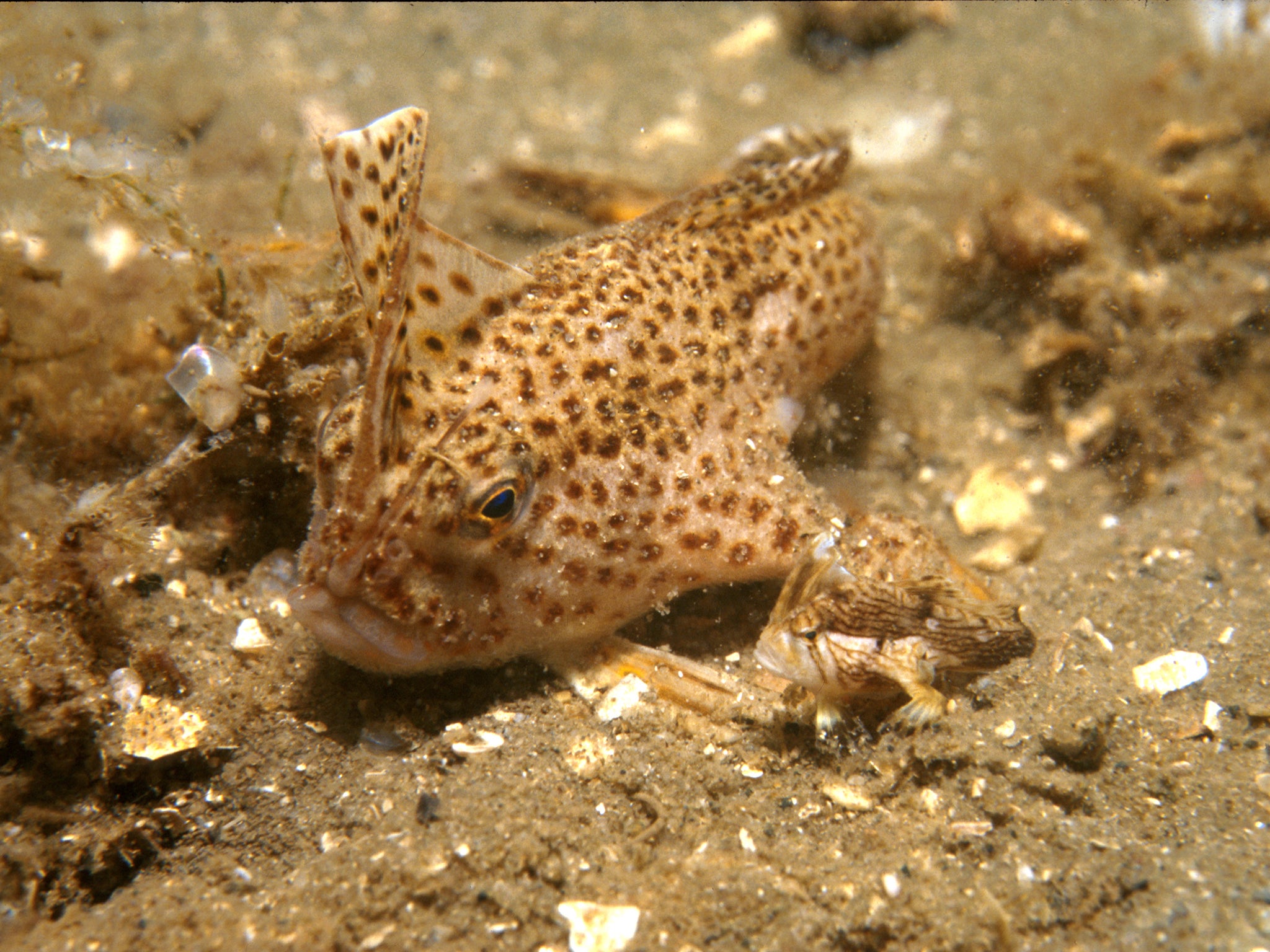Spotted handfish: Survival of Australian fish that 'walks' along the seabed hangs in the balance
The species now only exists in Hobart's Derwent estuary in Tasmania

The survival of a fish that “walks” along the seabed and is noted for the way it stands guard by its eggs is hanging in the balance.
Australian scientists are considering breeding a small population of the spotted handfish in captivity to stop them becoming extinct, according to the Sydney Morning Herald.
The handfish, which is no more than three inches long, used to be widespread but now only exists in Hobart's Derwent estuary in Tasmania, has suffered from its selfless habit of standing guard by its eggs on the seabed.
This has left it vulnerable to the ravenous advances of the Northern Pacific seastar, which has been eating the surrounding habitat and ruining its otherwise effective camouflage.
As a result, the handfish has become very vulnerable to predators. Only 79 of the fish were found in the estuary when a complete survey was run, a senior research scientist told the Sydney Morning Herald.
"It would be very prudent to think about captive breeding of the fish at this stage," Tim Lynch, a researcher at Australia's Commonwealth Scientific and Industrial Research Organisation (CSIRO), told the Herald.
"We're organising a workshop to cost it out, and see what we can do."
The seastar is native to China, Korea, Russia and Japan.
Scientists think it arrived in Tasmania because of ships sucking in ballast water with larvae in Japan and letting it out in Australian ports. It is on the Invasive Species Specialist Group list of the world's 100 worst invasive species.
Critically endangered species
Show all 10Battling against this threat, the spotted handfish continues to catch its prey by creeping over the seafloor on highly developed fins which are almost hand-like (hence the name). When it is threatened it spreads its fins in display.
More factors pushing the little fish to the brink found by CSIRO's survey include new yacht moorings, storm water engineering and nutrient run-offs which are creating algal mats.
Nor was tourist interest likely to save it, Dr Lynch told the Herald.
"You have to be quite hardy," he said. "These are icy dives, the fish are tucked away behind sponges or in holes, and very difficult to see."
Subscribe to Independent Premium to bookmark this article
Want to bookmark your favourite articles and stories to read or reference later? Start your Independent Premium subscription today.

Join our commenting forum
Join thought-provoking conversations, follow other Independent readers and see their replies